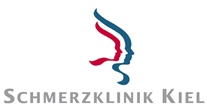- 1. Migraine
- 2. Tension-type headache (TTH)
- 3. Trigeminal autonomic cephalalgias (TACs)
- 4. Other primary headache disorders
- 4.1 Primary cough headache
- 4.2 Primary exercise headache
- 4.3 Primary headache associated with sexual activity
- 4.4 Primary thunderclap headache
- 4.5 Cold-stimulus headache
- 4.6 External-pressure headache
- 4.7 Primary stabbing headache
- 4.8 Nummular headache
- 4.9 Hypnic headache
- 4.10 New daily persistent headache (NDPH)
- 5. Headache attributed to trauma or injury to the head and/or neck
- 5.1 Acute headache attributed to traumatic injury to the head
- 5.2 Persistent headache attributed to traumatic injury to the head
- 5.3 Acute headache attributed to whiplash1
- 5.4 Persistent headache attributed to whiplash
- 5.5 Acute headache attributed to craniotomy
- 5.6 Persistent headache attributed to craniotomy
- 6. Headache attributed to cranial or cervical vascular disorder
- 6.1 Headache attributed to cerebral ischaemic event
- 6.2 Headache attributed to non-traumatic intracranial haemorrhage
- 6.2.1 Headache attributed to non-traumatic intracerebral haemorrhage
- 6.2.2 Acute headache attributed to non-traumatic subarachnoid haemorrhage (SAH)
- 6.2.3 Acute headache attributed to non-traumatic acute subdural haemorrhage (ASDH)
- 6.2.4 Persistent headache attributed to past non-traumatic intracranial haemorrhage
- 6.3 Headache attributed to unruptured vascular malformation
- 6.3.1 Headache attributed to unruptured saccular aneurysm
- 6.3.2 Headache attributed to arteriovenous malformation (AVM)
- 6.3.3 Headache attributed to dural arteriovenous fistula (DAVF)
- 6.3.4 Headache attributed to cavernous angioma
- 6.3.5 Headache attributed to encephalotrigeminal or leptomeningeal angiomatosis (Sturge Weber syndrome)
- 6.4 Headache attributed to arteritis
- 6.5 Headache attributed to cervical carotid or vertebral artery disorder
- 6.6 Headache attributed to cranial venous disorder
- 6.7 Headache attributed to other acute intracranial arterial disorder
- 6.8 Headache attributed to genetic vasculopathy
- 6.8.1 Headache attributed to Cerebral Autosomal Dominant Arteriopathy with Subcortical Infarcts and Leukoencephalopathy (CADASIL)
- 6.8.2 Headache attributed to Mitochondrial Encephalopathy, Lactic Acidosis and Stroke-like episodes (MELAS)
- 6.8.3 Headache attributed to Moyamoya angiopathy (MMA)
- 6.8.4 Migraine-like aura attributed to cerebral amyloid angiopathy (CAA)
- 6.8.5. Headache attributed to syndrome of retinal vasculopathy with cerebral leukoencephalopathy and systemic manifestations (RVCLSM)
- 6.8.6 Headache attributed to other chronic intracranial vasculopathy
- 6.9 Headache attributed to pituitary apoplexy
- 7. Headache attributed to non-vascular intracranial disorder
- 7.1 Headache attributed to increased cerebrospinal fluid (CSF) pressure
- 7.1.1 Headache attributed to idiopathic intracranial hypertension (IIH)
- 7.1.2 Headache attributed to intracranial hypertension secondary to metabolic, toxic or hormonal cause
- 7.1.3 Headache attributed to intracranial hypertension secondary to chromosomal disorder
- 7.1.4 Headache attributed to intracranial hypertension secondary to hydrocephalus
- 7.2 Headache attributed to low cerebrospinal fluid (CSF) pressure
- 7.3 Headache attributed to non-infectious inflammatory intracranial disease
- 7.3.1 Headache attributed to neurosarcoidosis
- 7.3.2 Headache attributed to aseptic (non-infectious) meningitis
- 7.3.3 Headache attributed to other non-infectious inflammatory intracranial disease
- 7.3.4 Headache attributed to lymphocytic hypophysitis
- 7.3.5 Syndrome of transient Headache and Neurological Deficits with cerebrospinal fluid Lymphocytosis (HaNDL)
- 7.4 Headache attributed to intracranial neoplasia
- 7.5 Headache attributed to intrathecal injection
- 7.6 Headache attributed to epileptic seizure
- 7.7 Headache attributed to Chiari malformation type I (CM1)
- 7.8 Headache attributed to other non-vascular intracranial disorder
- 7.1 Headache attributed to increased cerebrospinal fluid (CSF) pressure
- 8. Headache attributed to a substance or its withdrawal
- 8.1 Headache attributed to use of or exposure to a substance
- 8.1.1 Nitric oxide (NO) donor-induced headache
- 8.1.2 Phosphodiesterase (PDE) inhibitor-induced headache
- 8.1.3 Carbon monoxide (CO)-induced headache
- 8.1.4 Alcohol-induced headache
- 8.1.5 Cocaine-induced headache
- 8.1.6 Histamine-induced headache
- 8.1.7 Calcitonin gene-related peptide (CGRP)-induced headache
- 8.1.8 Headache attributed to exogenous acute pressor agent
- 8.1.9 Headache attributed to occasional use of non-headache medication
- 8.1.10 Headache attributed to long-term use of non-headache medication
- 8.1.11 Headache attributed to use of or exposure to other substance
- 8.2 Medication-overuse headache (MOH)
- 8.2.1 Ergotamine-overuse headache
- 8.2.2 Triptan-overuse headache
- 8.2.3 Non-opioid analgesic-overuse headache
- 8.2.4 Opioid-overuse headache
- 8.2.5 Combination-analgesic-overuse1 headache
- 8.2.6 Medication-overuse headache attributed to multiple drug classes not individually overused
- 8.2.7 Medication-overuse headache attributed to unspecified or unverified overuse of multiple drug classes
- 8.2.8 Medication-overuse headache attributed to other medication
- 8.3 Headache attributed to substance withdrawal
- 8.1 Headache attributed to use of or exposure to a substance
- 9. Headache attributed to infection
- 9.1 Headache attributed to intracranial infection
- 9.2 Headache attributed to systemic infection
- 10. Headache attributed to disorder of homoeostasis
- 10.1 Headache attributed to hypoxia and/or hypercapnia
- 10.2 Dialysis headache
- 10.3 Headache attributed to arterial hypertension
- 10.3.1 Headache attributed to phaeochromocytoma
- 10.3.2 Headache attributed to hypertensive crisis without hypertensive encephalopathy
- 10.3.3 Headache attributed to hypertensive encephalopathy
- 10.3.4 Headache attributed to pre-eclampsia or eclampsia
- 10.3.5 Headache attributed to autonomic dysreflexia
- 10.4 Headache attributed to hypothyroidism
- 10.5 Headache attributed to fasting
- 10.6 Cardiac cephalalgia
- 10.7 Headache attributed to other disorder of homoeostasis
- 11. Headache or facial pain attributed to disorder of the cranium, neck, eyes, ears, nose, sinuses, teeth, mouth or other facial or cervical structure
- 11.1 Headache attributed to disorder of cranial bone
- 11.2 Headache attributed to disorder of the neck
- 11.3 Headache attributed to disorder of the eyes
- 11.4 Headache attributed to disorder of the ears
- 11.5 Headache attributed to disorder of the nose or paranasal sinuses
- 11.6 Headache attributed to disorder of the teeth
- 11.7 Headache attributed to temporomandibular disorder (TMD)
- 11.8 Headache or facial pain attributed to inflammation of the stylohyoid ligament
- 11.9 Headache or facial pain attributed to other disorder of cranium, neck, eyes, ears, nose, sinuses, teeth, mouth or other facial or cervical structure
- 12. Headache attributed to psychiatric disorder
- 13. Painful lesions of the cranial nerves and other facial pain
- 13.1 Pain attributed to a lesion or disease of the trigeminal nerve
- 13.2 Pain attributed to a lesion or disease of the glossopharyngeal nerve
- 13.3 Pain attributed to a lesion or disease of nervus intermedius
- 13.4 Occipital neuralgia
- 13.5 Neck-tongue syndrome
- 13.6 Painful optic neuritis
- 13.7 Headache attributed to ischaemic ocular motor nerve palsy
- 13.8 Tolosa-Hunt syndrome
- 13.9 Paratrigeminal oculosympathetic (Raeder’s) syndrome
- 13.10 Recurrent painful ophthalmoplegic neuropathy
- 13.11 Burning mouth syndrome (BMS)
- 13.12 Persistent idiopathic facial pain (PIFP)
- 13.13 Central neuropathic pain
- 14. Other headache disorders
- Appendix
- A1. Migraine
- A2. Tension-type headache (alternative criteria)
- A3. Trigeminal-autonomic cephalalgias (TACs)
- A4. Other primary headache disorders
- A5. Headache attributed to trauma or injury to the head and/or neck
- A5.1 Acute headache attributed to traumatic injury to the head
- A5.2 Persistent headache attributed to traumatic injury to the head
- A5.7 Headache attributed to radiosurgery of the brain
- A5.8 Acute headache attributed to other trauma or injury to the head and/or neck
- A5.9 Persistent headache attributed to other trauma or injury to the head and/or neck
- Bibliography
- A6. Headache attributed to cranial and/or cervical vascular disorder
- A7. Headache attributed to non-vascular intracranial disorder
- A8. Headache attributed to a substance or its withdrawal
- A9. Headache attributed to infection
- A10. Headache attributed to disorder of homoeostasis
- A11. Headache or facial pain attributed to disorder of the cranium, neck, eyes, ears, nose, sinuses, teeth, mouth or other facial or cervical structure
- A12. Headache attributed to psychiatric disorder
- A12.3 Headache attributed to depressive disorder
- A12.4 Headache attributed to separation anxiety disorder
- A12.5 Headache attributed to panic disorder
- A12.6 Headache attributed to specific phobia
- A12.7 Headache attributed to social anxiety disorder (social phobia)
- A12.8 Headache attributed to generalized anxiety disorder
- A12.9 Headache attributed to post-traumatic stress disorder (PTSD)






